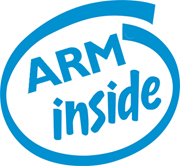 I’ve been following the cell-phone industry for years, ever since I was involved in strategic planning for VLSI Technology’s communications group, one of the first semiconductor companies to get involved in, first, GSM and then CDMA (we had a license from Qualcomm that I negotiated but that’s another long story).
I’ve been following the cell-phone industry for years, ever since I was involved in strategic planning for VLSI Technology’s communications group, one of the first semiconductor companies to get involved in, first, GSM and then CDMA (we had a license from Qualcomm that I negotiated but that’s another long story).
Nokia has been a dominant player in the market, which isn’t immediately obvious if you live in the US or Japan where it, well, isn’t. But one in three cell-phones shipped is a Nokia phone. In rough numbers they ship a millions cell-phones every day.
Until very recently they had the largest market share for smart-phones too, based on their Symbian operating system that they tried to make independent, then tried to make open source and now have rolled back in again. But they missed the market for hi-end smartphones which are dominated by Apple/iOS and Google/Android.
They are also starting to struggle at the low end. A lot of those hundreds of millions of phones are low-end phones at very low prices for poor countries, But companies like Mediatek pretty much have turnkey chipsets for phones, and so relatively small companies in China can undercut them.
Earlier this week a memo from the CEO of Nokia, Stephen Elop (doesn’t that sound like a programming language) was leaked. It talked about a worker on an oil rig jumping into the icy waters to avoid certain death from the flames behind him. Elop reckons Nokia is at that point.
Nokia has had a very confusing operating system strategy to say the least. Nokia OS, Symbian, Meego, Maemo and now…Windows Phone 7.
Elop is an ex-Microsoft employee so perhaps it was just natural that he would do a deal with his old employer. Microsoft needs a major partner if it is going to have any success in the mobile industry, its previous attempts being somewhere between unsuccessful and disastrous. WP7 was apparently doing so badly that Microsoft has stopped saying how many phones shipped after some initially good sounding numbers where were basically just phones for loading the channel, which won’t be needed unless some come out the other end.
I just don’t see how WP7/Nokia can possibly catch up to iOS and Android. In fact Android’s momentum is so strong that even iOS could be threatened. In Q4 last year Android appeared to be registering as many phones a day as AT&T did in the whole quarter (of course outside the US there are other carriers using iPhone so that’s not the total shipments).
WP7 is not really designed to run on a broad range of different handsets, it has very specific processors and chips that must be used in the hardware. So porting WP7 to Nokia’s line may be hard.
So I think Nokia is probably doomed, with the wrong operating system at the high end and not enough time to get it right, and cheap competition at the low end (where there is lots of volume but it was unclear how much money Nokia really made).
I’m not the only person who doesn’t think much of this strategy. Nokia was down 15% on the announcement.
 I just put up a blog about the EDA interoperability forum, much of which is focused on standards. Which reminded me just how long-lived some standards turn out to be.
I just put up a blog about the EDA interoperability forum, much of which is focused on standards. Which reminded me just how long-lived some standards turn out to be.







